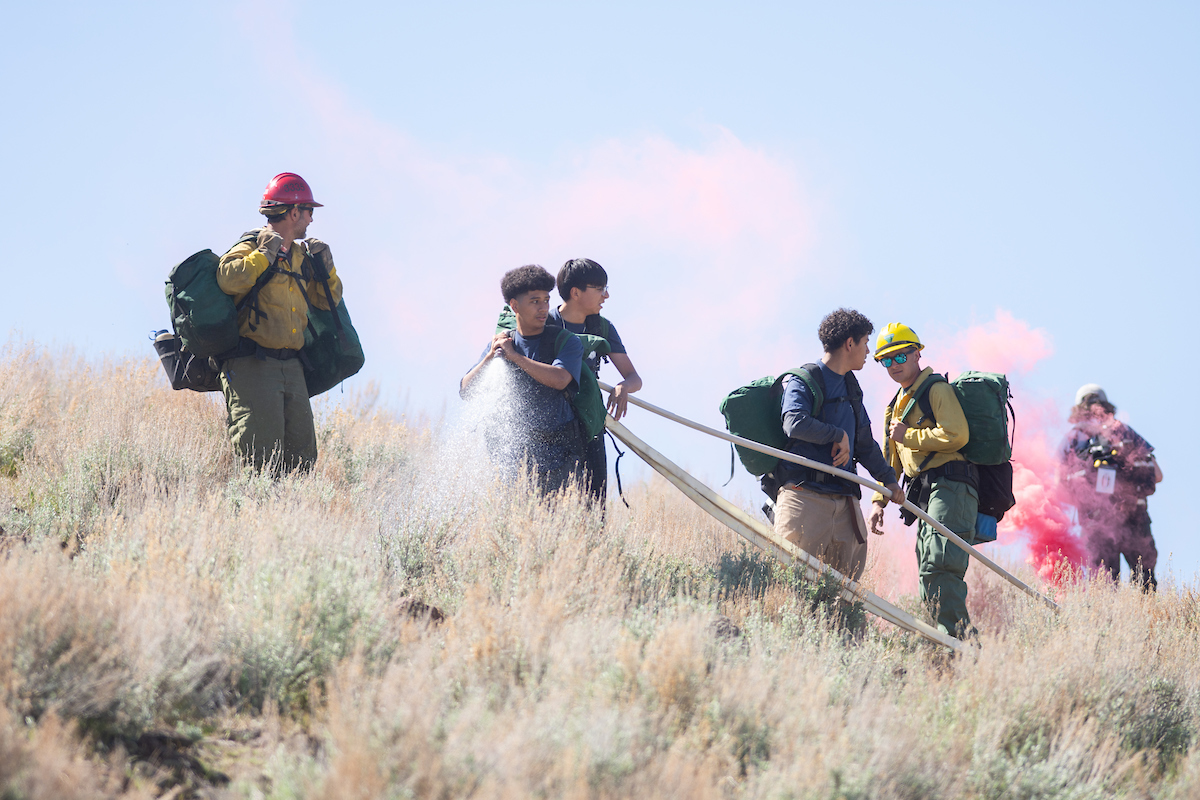Local and federal agency officials are hoping a “grow-your-own” program could help overcome labor shortages.
Good morning, and welcome to the Indy Environment newsletter. I’m Amy Alonzo, the environment reporter for The Indy.
As a budding photojournalist in the early 2000s, I covered multiple wildfires across the West. I was young and the fires were exciting.
I also covered my fair share of structure fires — a blaze flushing a cauldron of bats from an old restaurant, another time when multiple oxygen tanks exploded in a house, sending everyone on scene ducking for cover.
When I moved to the East Coast in my 30s, I found I actually missed wildfires — the eerie orange glow in the sky, adrenaline pumping as I worked crazy hours to document the destruction.
Over the years, as wildfires have gotten worse and I have matured, they’ve shifted to filling me with dread. The smoke. The loss of habitat and life.
However we view fires, one thing remains constant — we need the women and men who are willing to fight them. And it’s getting harder and harder to find enough of them. A new Washoe County program is tackling that shortage head-on.
As always, we want to hear from readers. Let us know what you’re seeing on the ground and how policies are affecting you. Email tips to me at amy@thenvindy.com.
To get this newsletter in your inbox, subscribe here.
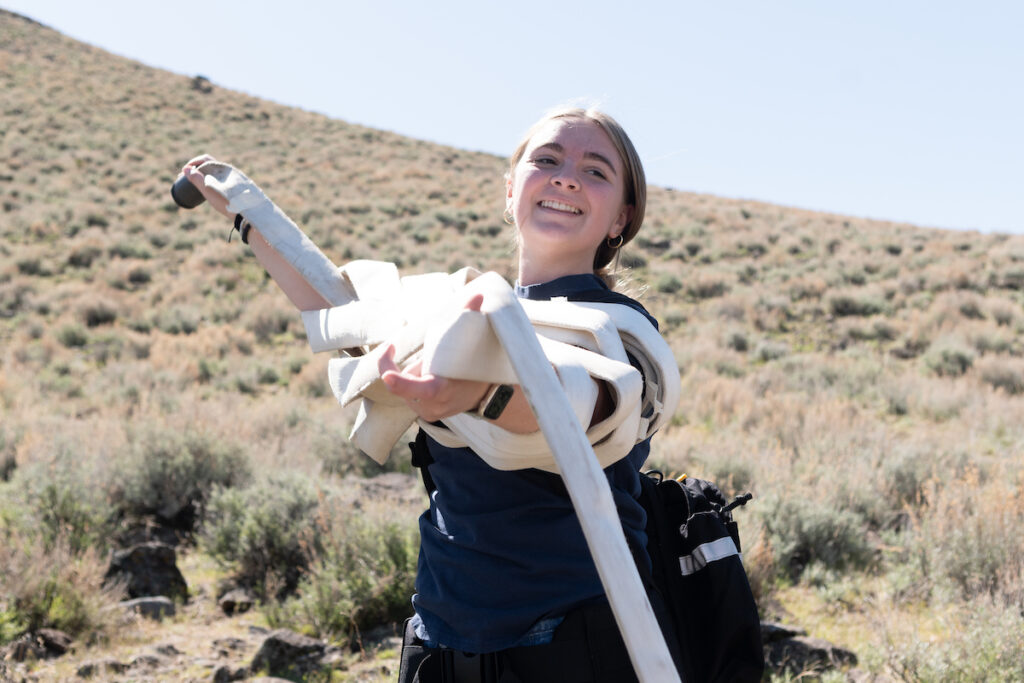
Madison Ellison peered at a sausage patty in her MRE — the prepackaged, instant ration soldiers and firefighters consume while out in the field — before poking it cautiously with a plastic utensil.
The Academy of Arts, Careers and Technology (AACT) senior took the tiniest of nibbles — and immediately spit the sausage out.
“This is disgusting!” she exclaimed.
Ellison is one of 15 students in Washoe County’s new Fire Science Academy. Offered in conjunction with UNR Extension’s Living With Fire program, the first-of-its-kind program in the county introduces students to the basics of municipal and wildland firefighting and gives them the foundation to apply directly for jobs or study fire science in college.
It is also designed to garner interest in a career field that is struggling to attract a qualified workforce locally and nationally. Municipal and wildland firefighting agencies are finding it harder to fill positions, and the partnership with the academy could generate some homegrown job candidates, said Jeff Knox, captain with Truckee Meadows Fire Protection District.
“We want to get these kids interested,” he said.
The classes mix lectures and hands-on learning, including a recent trip to south Reno that let students battle a mock wildland fire with federal firefighters. The hands-on learning experience was something the students could really sink their teeth into — although the food was a bit less palatable.
Ellison was equally horrified by the chicken stew and nacho cheese with pretzels in the meal pouch, declaring she would starve before eating the MRE.
A seasoned Bureau of Land Management (BLM) firefighter who’d eaten his fair share of MREs shot a look at Ellison and the packet of nacho cheese, a bemused look on his face.
“That’s gold right there,” he told her with a laugh.
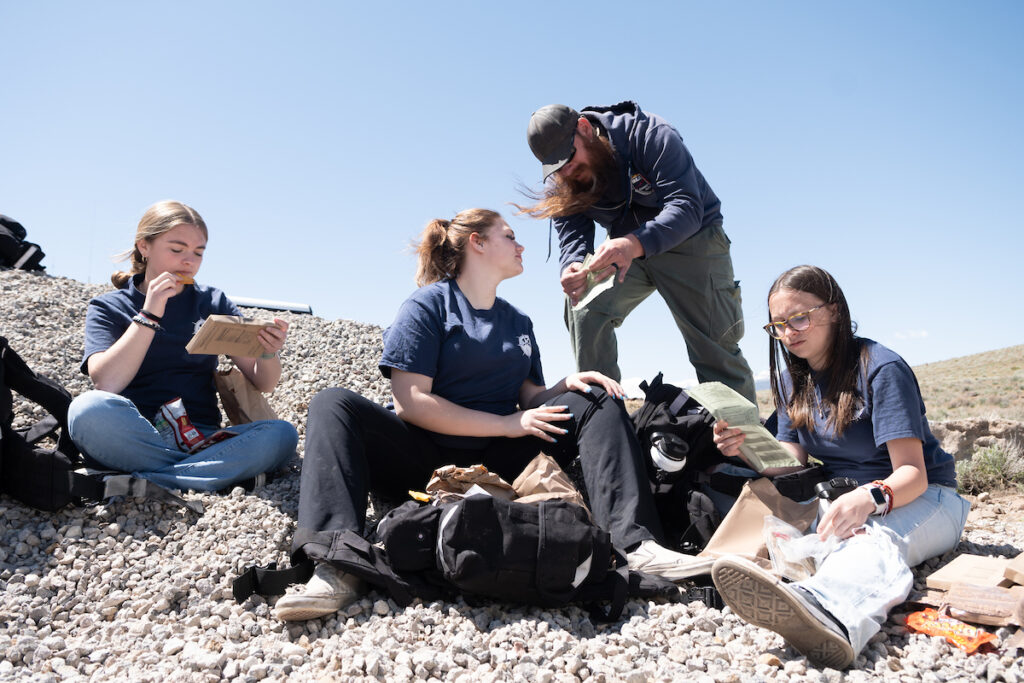
Raising a future generation of firefighters
Wildfires are growing in frequency and severity across the West, burning hundreds of thousands of acres at a time.
In 2018, nearly 440,000 acres burned in Northern Nevada in the state’s largest-ever wildfire, the Martin Fire. In 2020, the August Complex fires in California burned more than 1 million acres across seven counties.
In response, Living With Fire drafted a wildfire-based curriculum for high school students, tweaking traditional science classes to focus on fire-specific topics, such as the role of invasive annual grasses on wildfire frequency and their effects on Great Basin biology or how to create fuel breaks while protecting sage grouse habitat.
As the curriculum was being developed through state and federal funding, the BLM reached out to Living With Fire, asking it to develop a more technical career track, said Christina Restaino, director of the Living With Fire program.
The result was a partnership with AACT, an advanced career and technical education school in Washoe County. The school’s various academies focus on providing students hands-on learning experiences in topics ranging from culinary to medical — and now, firefighting.
Components of the fire academy include learning the basics of search and rescue, hose operations, fire investigation, wildfire behavior and property conservation. Students also obtain their basic emergency medical technician (EMT) certification.
The perks of the academy extend beyond the classroom.
This summer, students 16 and older will have the opportunity to work at a fire camp or as part of a fire prevention crew. Upon graduation, students will be eligible to apply for wildland fire positions or enroll in Truckee Meadows Community College’s fire academy; credits earned through the academy will allow them to bypass prerequisite classes, Knox said.
Last fall, students spent several months learning from staff at Truckee Meadows Fire Protection District, participating in a mock vehicle extraction and touring construction sites to learn about building codes; now, students are working with BLM and U.S. Forest Service staff to learn about wildland fires.
Students at the recent mock fire in south Reno worked together to lay hose up a steep, rocky hillside, then went over skills such as coiling it back up and learning basic hand tool use.
“It’s hard, especially with the terrain,” said sophomore Nick Sevigny, who said his grandfather was a wildland firefighter.
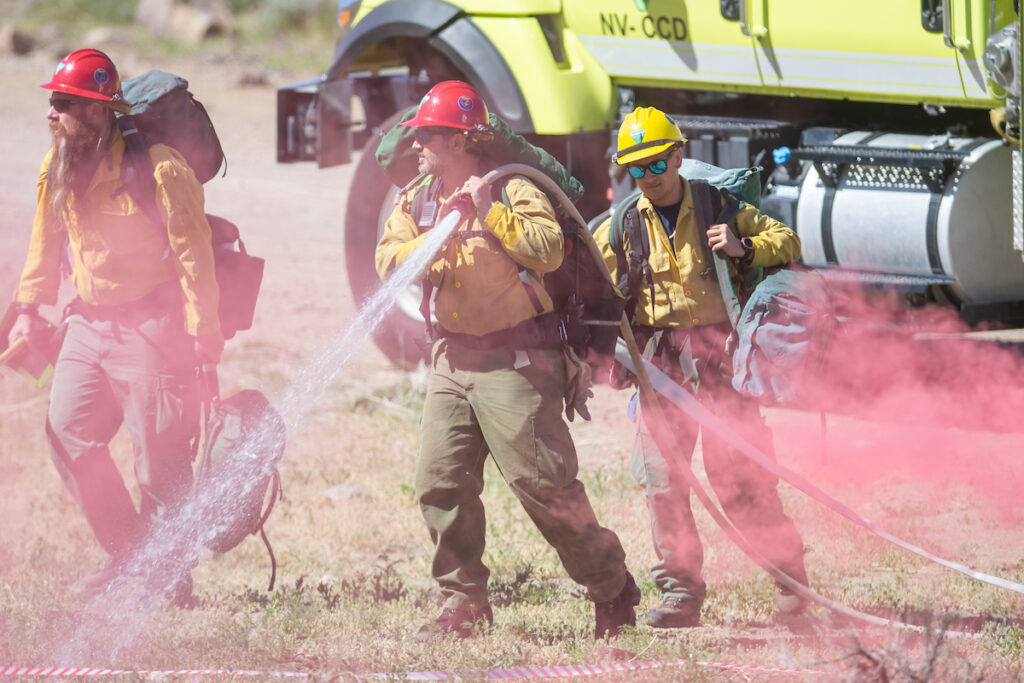
A hard job to sell
As the size of wildfires has increased, the number of people applying for vacant firefighter positions has declined.
In 2021, President Joe Biden increased the minimum wage for wildland firefighters from $13 to $15 per hour; the U.S. Forest Service has issued other temporary pay increases funded through the Bipartisan Infrastructure Law. Wildland firefighters receive additional pay for things such as overtime and hazard pay, but many acknowledge that the low starting salary hurts recruitment.
The U.S. Forest Service reported a 24 percent vacancy rate for wildland firefighters as of April 6, with a little more than 8,600 hired for the season.
“It’s very hard to sell this job,” said Lewis Brown, engine captain for the U.S. Forest Service.
It wasn’t always so hard to attract prospective firefighters, said Jen Diamond, fire mitigation specialist for the BLM and the spring instructor for the AACT academy.
In the early 2000s, “it was like gold if you could get a permanent job. These days, it’s different,” she said.
Knox, the Truckee Meadows Fire captain who taught the municipal portion of the class in the fall, remembers applying for jobs in the early 2000s with thousands of other applicants.
“We were standing in line in the rain at Reno City Hall to hand in paper applications,” he said. Eventually, the city cut down the number of applications it would accept, limiting it to 1,000, then 500, Knox said. Now, there is a lack of candidates.
The last time Truckee Meadows hired, there were fewer than two dozen applicants for the five or six open positions, he recalled.
“It’s something every fire department is experiencing. Sparks is experiencing it; the feds are experiencing it on the wildland side. We aren’t sure why — the job hasn’t changed,” he said. “Now we are really just hoping for someone who meets the minimal qualifications and passes a background check.
The federal and municipal firefighter shortage coincides with a state shortage as well. The Nevada Division of Forestry has closed four of its inmate firefighting camps in the past few years because of a shortage of staffing and qualified inmates.
“The bottom line is, we’re facing a hiring deficit. That is what really started this idea rolling around of ‘how do we get people interested,’ and AACT seemed like a good fit,” Knox said. “I think we created some interest and I hope it expands.”
Based on the student feedback, municipal fire departments such as Truckee Meadows could see an influx of applicants in a few years when they graduate. But wildland firefighting involves too much hiking, many of the students said after dragging hoses uphill during the training.
“I hate hiking,” said sophomore Melaynie Ware-Caputo. “I’d rather run into a burning building and save a couple animals or people.”
Whether she pursues a career in firefighting or not, she said she appreciates her new perspective.
“It’s cool knowing as a teenager how adults actually protect us,” she said.
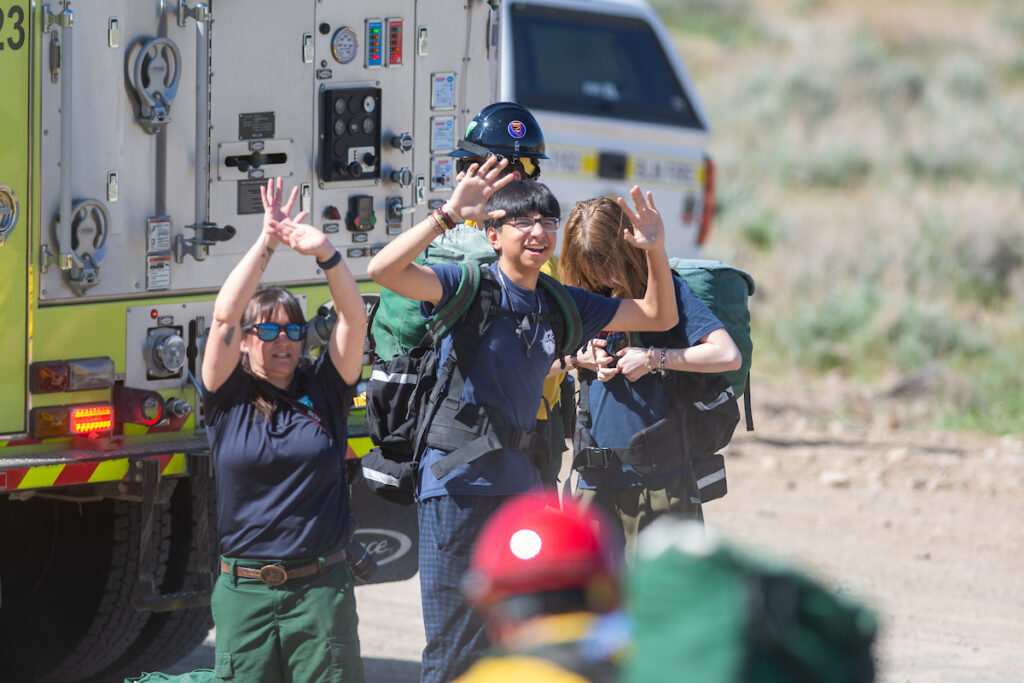
Here’s what else I’m reading (and listening to) this week:
Ever wonder what is, and isn’t recyclable in Nevada? KNPR breaks it down with experts, discussing why Nevada’s recycling rate is so low.
A long-closed section of Great Basin National Park is reopening to the public, according to the Las Vegas Review-Journal.
A Nevada Senate candidate has spoken publicly in support of Yucca Mountain, the L.A. Times reports.
A final decision date has been nailed down on whether or not to list the Fish Lake Valley tui chub as endangered, per the Nevada Current.
The state’s wildlife commission is the topic of water cooler scuttle. Find out why, again from KNPR.
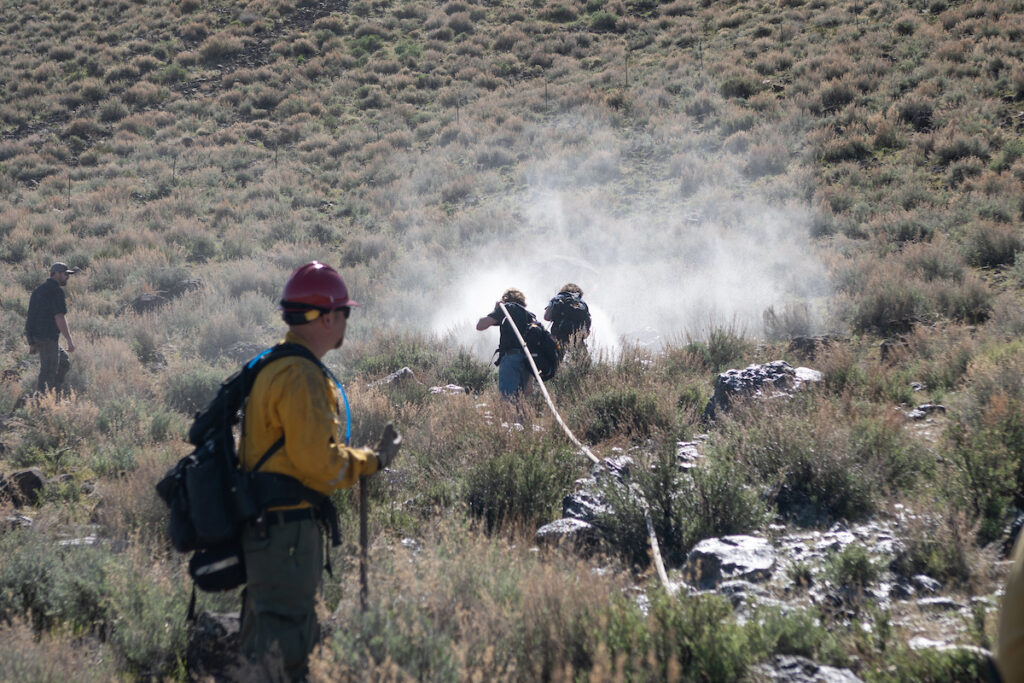
Read the rest of this article, which was shared with Noticiero Móvil, over at The Nevada Independent. This story was reported by Amy Alonzo and originally published on May 9th.
